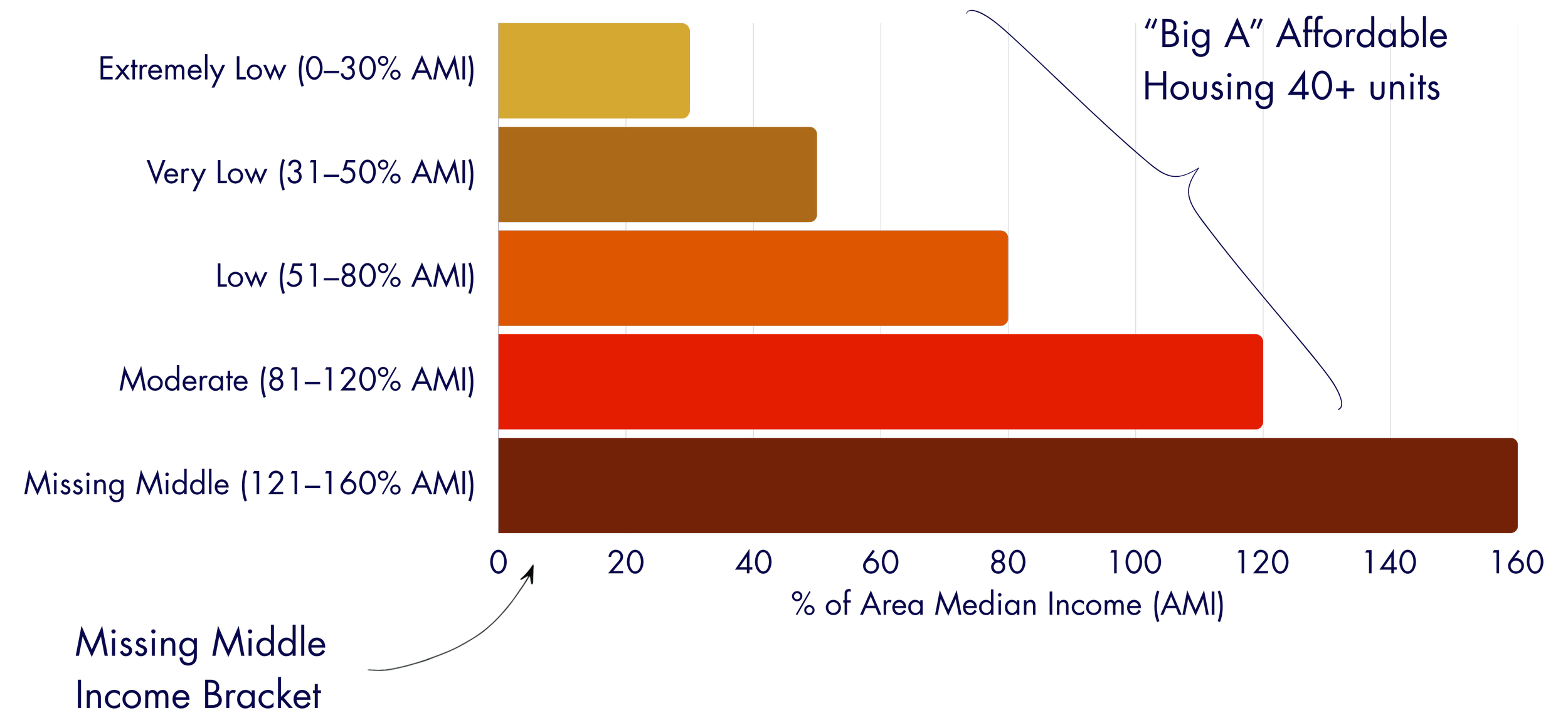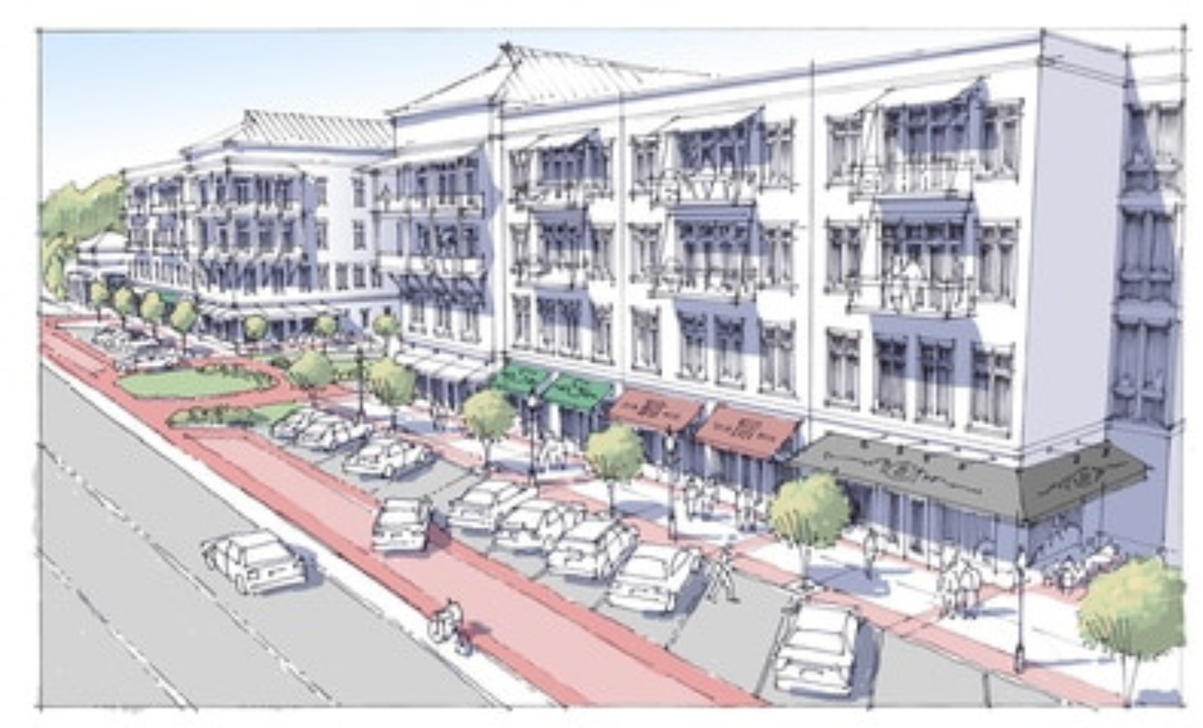Traditional “big A” affordable housing is largely built by specialized nonprofit developers using multiple government subsidies and grants. People can only live in these units if their income is 120% or less of the area median income (AMI) as determined by the census. Who are these people? Vineyard workers, farm workers, house cleaners, manicurists, baristas, restaurant staff, hotel staff, elderly, disabled, and more. “Big A” affordable housing is normally not available to teachers, firefighters, nurses, nonprofit staff, startup entrepreneurs, and other people essential to the community, because their incomes are too high to qualify, even though they cannot afford market housing prices.
According to the 2024 State of Housing in Sonoma County by Generation Housing, households where workers earn the median wage in six of the county’s most common occupations can only afford to pay, on average, $1,000 in rent each month, yet median rental costs are over $1,900. Roughly 8 in 10 Extremely Low-Income (<30% AMI) and Very Low-Income households (31-50% AMI) are housing cost burdened, while 40% of Moderate-Income households (80-120% AMI) are housing cost burdened, meaning they pay 30% or more of their income to cover housing costs.
Workforce housing encompasses both the Affordable designation and what has been called the “missing middle” (Above Moderate, 121-160% AMI), for which there are no government-designated programs. Who are these people? Police officers, firefighters, hospital workers, government workers, small business owners and employees, and others.
Housing Affordability Spectrum
Affordable Housing
30-60% Area Median Income
People who qualify based on their income. Usually rentals built by nonprofit developers in projects of 40+ units.
Missing Middle
61-120% Area Median Income
People who make too much to qualify for conventional affordable housing but cannot afford market-rate rentals or mortages.
Market Rate
121% + Area Median Income
People who can afford market rate + people earning 61-120% AMI who over-extend themselves + people earning 30-60% AMI who live in overcrowded conditions.







